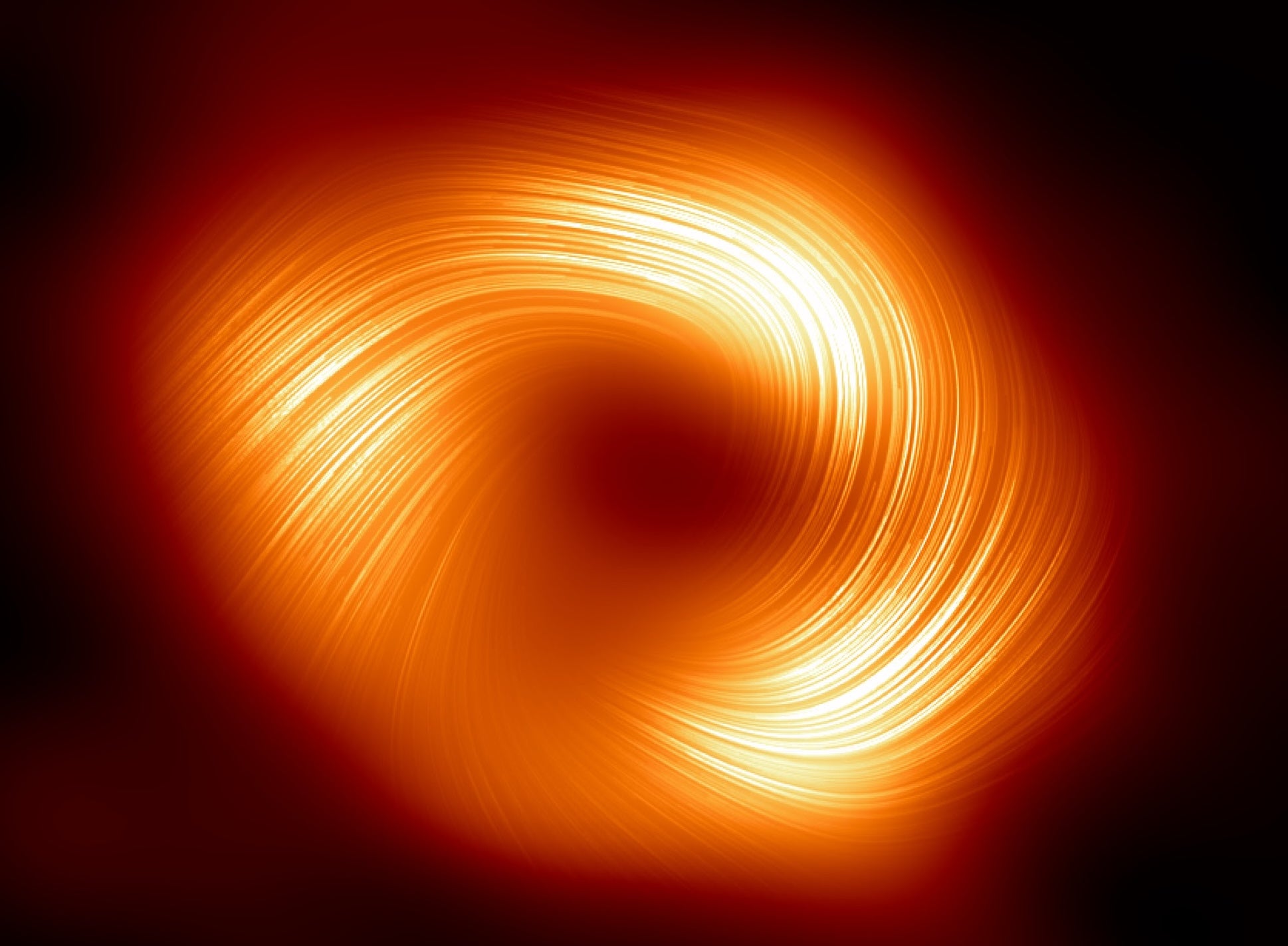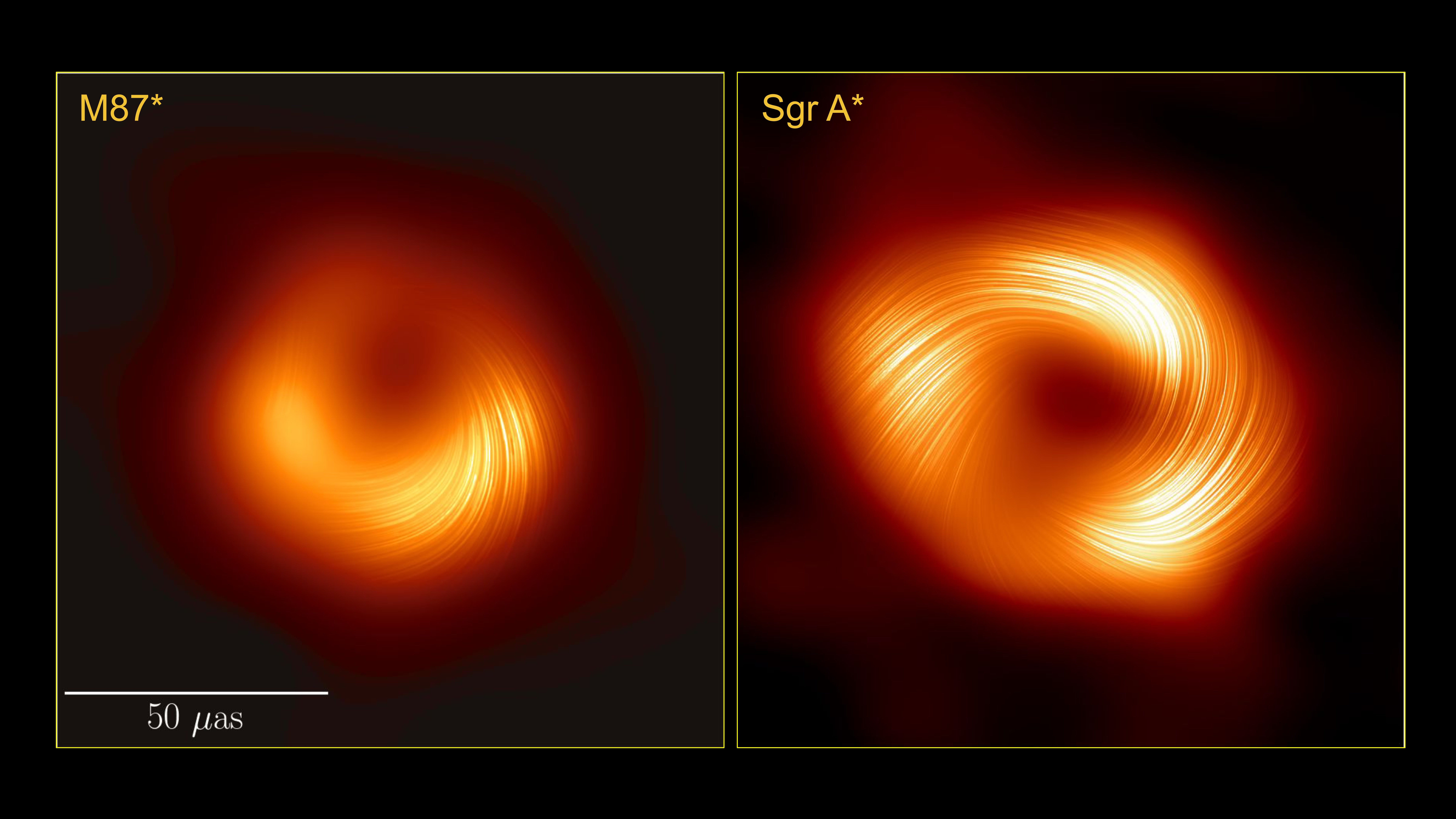Scientists reveal astonishing image of black hole in our galaxy

Scientists have revealed an astonishing new image of the black hole in the middle of our galaxy.
The object – known as Sagittarius A* – is shown in polarised light for the first time, in a profound breakthrough.
It offers a new view of that supermassive black hole that lies at the heart of our own Milky Way. The swirling image shows the magnetic field structure around the black hole and suggests that it might have a hidden jet (a stream of gas and energy).
The image was created by the scientists as part of the Event Horizon Telescope (EHT) collaboration. That produced the first image of a black hole – when in 2019 it produced a picture of the one at the heart of the Messier 87 galaxy – and followed it in 2022 with an image of the one at the heart of our Milky Way.

Our galaxy’s Milky Way is a thousand times smaller than Messier 87’s. But the new picture suggests they might be remarkably similar: as well as sharing a common look, they appear to have kindred magnetic field structures – suggesting those processes might be homogenous across black holes.
“What we’re seeing now is that there are strong, twisted, and organised magnetic fields near the black hole at the centre of the Milky Way galaxy,” said Sara Issaoun, Nasa Hubble Fellowship Program Einstein fellow at the Center for Astrophysics at Harvard & Smithsonian and co-lead of the project.
“Along with Sgr A* having a strikingly similar polarisation structure to that seen in the much larger and more powerful M87* black hole, we’ve learned that strong and ordered magnetic fields are critical to how black holes interact with the gas and matter around them.”
University College London’s Dr Ziri Younsi, a co-author on the papers, and a member of the EHT collaboration said: “It is very exciting to see the first polarised images of the black hole in the heart of our galaxy.
“These observations reveal much more information about the magnetic fields surrounding the black hole, and will improve our ability to model accreting black holes in the future.

“It is remarkable that the polarisation structure of Sgr A* is so similar to that of the M87 black hole, which we know possesses a prodigious relativistic jet.
“This exciting new study hints at the possibility of a jet hiding near the event horizon of Sgr A*.”
Seen in polarised light for the first time, the image shows orange swirls around the black hole, said to resemble the Eye of Sauron from the film adaption of JRR Tolkien’s Lord of the Rings.
Light is an oscillating or moving electromagnetic wave that allows us to see objects, while polarised light is light in which the electric and magnetic fields each vibrate in a single plane.
Although it surrounds us, human eyes cannot tell it apart from normal light.
Around the black holes, particles whirling around magnetic field lines give off a polarisation pattern, allowing astronomers to see what is happening in black hole regions in increasing detail and map their magnetic field lines.
The EHT collaboration involves more than 300 researchers from Africa, Asia, Europe, and North and South America.
The international collaboration is working to capture the most detailed black hole images ever obtained by creating a virtual Earth-sized telescope.
The Atacama Large Millimeter Array (Alma), in which the European Southern Observatory (ESO ) is a partner, and the ESO-hosted Atacama Pathfinder Experiment, both in northern Chile, were part of the network that made the observations, conducted in 2017.
The findings are published in The Astrophysical Journal Letters.
Additional reporting by agencies
Join our commenting forum
Join thought-provoking conversations, follow other Independent readers and see their replies
0Comments